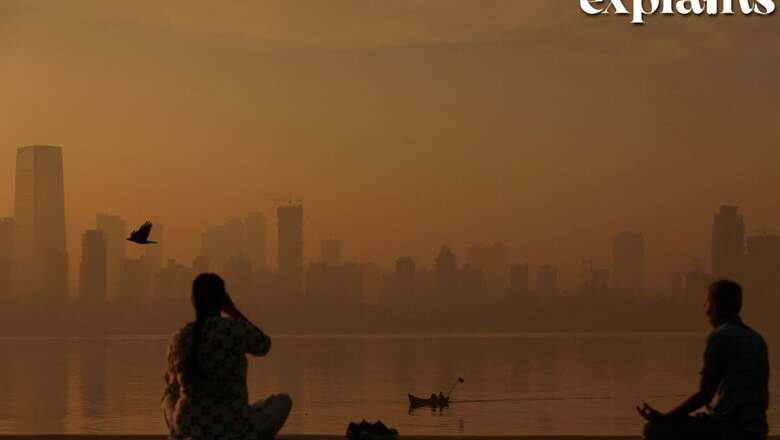
views
Mumbai was ranked among the world’s most polluted cities on Sunday along with New Delhi and Kolkata, according to data by Swiss Group IQAir.
Mumbai’s Air Quality Index (AQI) registered at 162 on Friday morning, categorising it as ‘moderate,’ while Delhi saw AQI at 483 and Kolkata at 206.
The coastal city was largely free of the issue of air pollution and the problems of haze or smog, due to its coastal location. The strong sea breezes would blow dust and other suspended particles away from the metropolitan city saving the city’s air from pollution like Delhi or Kolkata.
Pollution is killing our cities and we must solve this problem through clean technologies that prevent stubble burning and other age old contributors to smog. Pradooshan Mukt Bharat pic.twitter.com/1dcBqqtbbQ— Kiran Mazumdar-Shaw (@kiranshaw) November 5, 2023
However, in the last two years, Mumbai is seeing surging air pollution while the geographical advantage is no longer offering reliable protection. On several days this year, the air quality in Mumbai was worse than in Delhi, which makes national headlines for its air quality every winter.
How Pollution Become a Problem in Mumbai?
Mumbai is a coastal city surrounded by sea on three sides. The coastal cities experience strong winds, which sweep away suspended pollutants in the air.
Despite the geographical advantage, a combination of natural and man-made factors is behind the rising AQI in the city.
The air circulation that determines the temperature, humidity and air quality over Mumbai has been the latest cause behind the pollution. In 2022, Mumbai saw the longest spell of poor air quality in the city, extending from November to January.
Wind Patterns
The direction and strength of winds are often the key factor in determining Mumbai’s air quality. Though the city generates a huge amount of pollutants from vehicles, industries and other sources, the strong winds, characteristic of any coastal location, turn out to be quite beneficial here.
Winds usually move either from the sea towards the land or from the land towards the sea. The cycle keeps on repeating every 3-4 days during this time of the year. The wind directing towards the sea carry the dust particles away from the city, acting as a natural cleansing mechanism.
According to a report in The Indian Express, the pattern of wind reversal from sea to land is taking longer than usual due to which the winds have also become weaker. The current cycle has disrupted wind flow impacting the city’s air quality.
Major Construction Projects
In the last three years, there has been a huge rise in construction activities in Mumbai, resulting in a huge displacement of dust and particulate matter in the air. As per the data in the Mumbai Air Pollution Mitigation Plan (MAPMP) document, the key factor contributing to pollution in Mumbai is the dust arising from the construction and demolition work, followed by road dust and its resuspension into the air.
The prevalent climatic conditions make the dust particles linger in the lower atmosphere for longer period. Construction work is going on at 6,000 sites in the city currently.
Moreover, Mumbai had an unusually hot October. The temperature difference between the city and nearby hilly regions has resulted in winds from these areas moving towards Mumbai. Refineries, industries, and garbage burning have added to the problem.
The rising pollution has also been attributed to climate change, road dust, and the use of unclean fuels in restaurants, bakeries and roadside eateries and industries including those using Ready Mix Concrete (RMC) plants.
The Brihanmumbai Municipal Corporation (BMC) officials visited 815 construction sites on Friday and issued notices to 461, to mitigate the air pollution.
Transition in Climate Conditions
The warming over the Middle East and the northern Arabian Sea is causing changes in the wind in the pre-monsoon, monsoon, and post-monsoon climatic conditions. The recent increase in the number of pre-monsoon heat waves and heavy rain spells during the summer monsoon in addition to the October heat and pollution, point to changes forced from far away that are here to stay.
The construction pollution, dust and emissions transported from central and northern India have made it a great challenge to the city’s pollution problem, The Hindu reported.



















Comments
0 comment